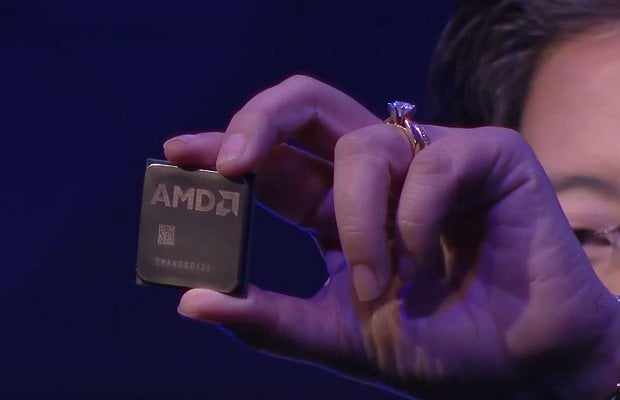See How Your CPU Stacks Up Against AMD Ryzen With This Open Source Tool

AMD is re-introducing itself to the performance sector and it is doing it with Ryzen, the chip designer's next-generation processor architecture formerly known as Zen. How Ryzen ends up performing in the real world is the million dollar question, as performance along with price will dictate if its worth jumping ship from Intel. We are not able to answer that question yet, but we can show you how to compare your current processor with Ryzen based on the Blender tool that AMD used to pit its CPU architecture against Broadwell-E.
The first thing you need to do is download and install Blender (download it here). This is a free and open source 3D creation suite that supports every aspect of the 3D pipeline, from modeling and rigging, to animation and simulation, and even video editing and game creation. Blender has been used in a number of professional projects, including television commercials in several parts of the world, by NASA to create 3D models, in the movie Hardcore Henry CGI and compositing, and by the History Channel, to name a few examples.
If you'd rather not install Blender to your system, you can download a ZIP file, extract its contents to your hard drive, and run the program that way. To go that route, fire up the Blender excutable, not the BlenderPlayer file.
The next thing you need is the source file that AMD used to publicly demo Ryzen. It is called RyzenGraphics_27.blend and you can download it here.

For as close to an apples-to-apples comparison as possible, you'll want to run this on a Windows 10 system, since that is operating system AMD used. The OS does affect results, so even though this is a cross-platform tool, your choice of OS matters if you're looking for the most accurate comparison.
Same goes for the version of Blender. AMD used the currently available 64-bit build of version 2.78a. Performance doesn't necessarily line up between differing versions, so be sure you're grabbing 2.78a.
Finally, kill as many background tasks as you can, including your antivirus software.

Now you're ready to put your CPU through its paces. Either double-click the AMD source file you downloaded or find it Blender by going to File > Open and navigating to your system drive. Before you launch the benchmark, verify that the render sample size is 150.


You'll find the sample size under the Sampling section on the right-hand side. The reason you want it set at 150 is because that is what AMD used at its recent Ryzen event. When AMD ran this same test back in August, it used a sample size of 100, but that was to shorten the demo for attendees. We're not comparing performance to that four-month-old run.
Once you've reached this point, you are ready to run the benchmark. Inside Blender, select Render > Render Image from the top toolbar, or just click the F12 key. During AMD's demo, it took Ryzen 36 seconds to complete this task. How long it takes your processor will largely depend on the number of cores and threads, and of course clockpeed.
As a point of reference, we ran this on a system with a Core i7-4790K processor (Devil's Canyon). It has four cores, eight threads, 8MB of cache, and is clocked at 4GHz (base) to 4.4GHz (boost). With a few programs open in the background (this is a work PC, but we wanted to at least provide some kind of data to compare against), it took 60 seconds to complete the render, or about 67 percent longer.
We also ran the test on a gaming desktop with a Core i7-6950X processor (Broadwell-E) inside. This is a 10-core CPU with 20 threads and 25MB of cache. It is running at stock, which is 3GHz (base) to 3.5GHz (boost) and it took 24 seconds to complete the render, which is about 33 percent faster.
If you decide to run this test, tell us in the comments section how long it took and some details about your system.
Once you've reached this point, you are ready to run the benchmark. Inside Blender, select Render > Render Image from the top toolbar, or just click the F12 key. During AMD's demo, it took Ryzen 36 seconds to complete this task. How long it takes your processor will largely depend on the number of cores and threads, and of course clockpeed.
As a point of reference, we ran this on a system with a Core i7-4790K processor (Devil's Canyon). It has four cores, eight threads, 8MB of cache, and is clocked at 4GHz (base) to 4.4GHz (boost). With a few programs open in the background (this is a work PC, but we wanted to at least provide some kind of data to compare against), it took 60 seconds to complete the render, or about 67 percent longer.
We also ran the test on a gaming desktop with a Core i7-6950X processor (Broadwell-E) inside. This is a 10-core CPU with 20 threads and 25MB of cache. It is running at stock, which is 3GHz (base) to 3.5GHz (boost) and it took 24 seconds to complete the render, which is about 33 percent faster.
If you decide to run this test, tell us in the comments section how long it took and some details about your system.



